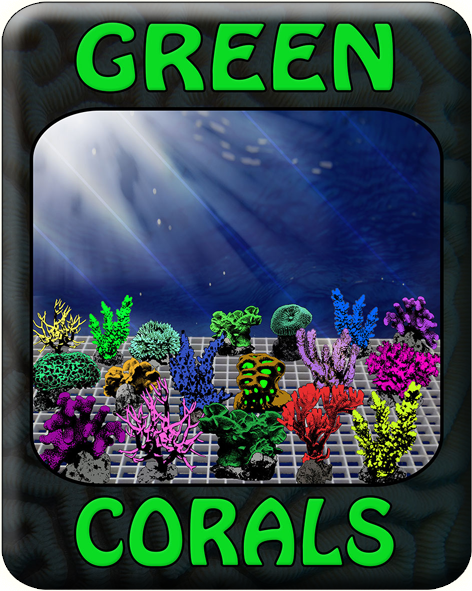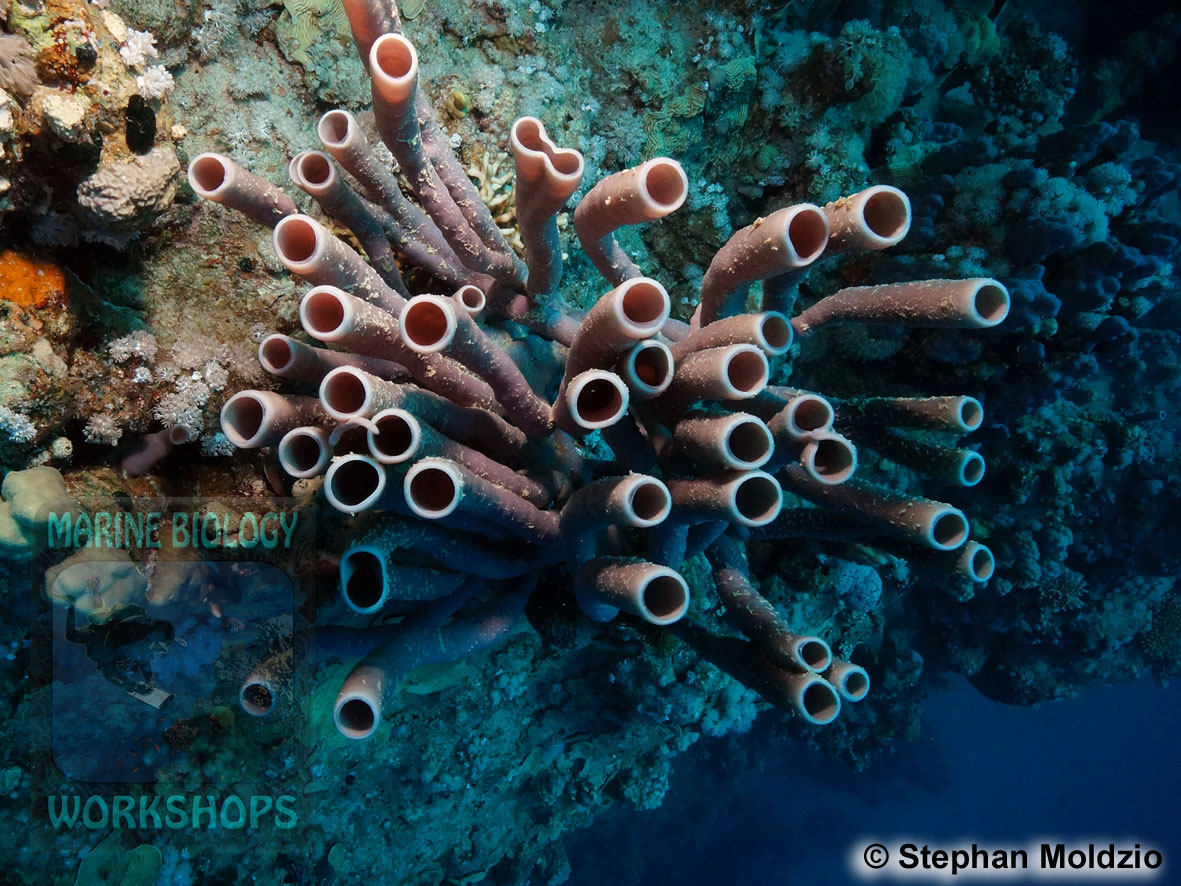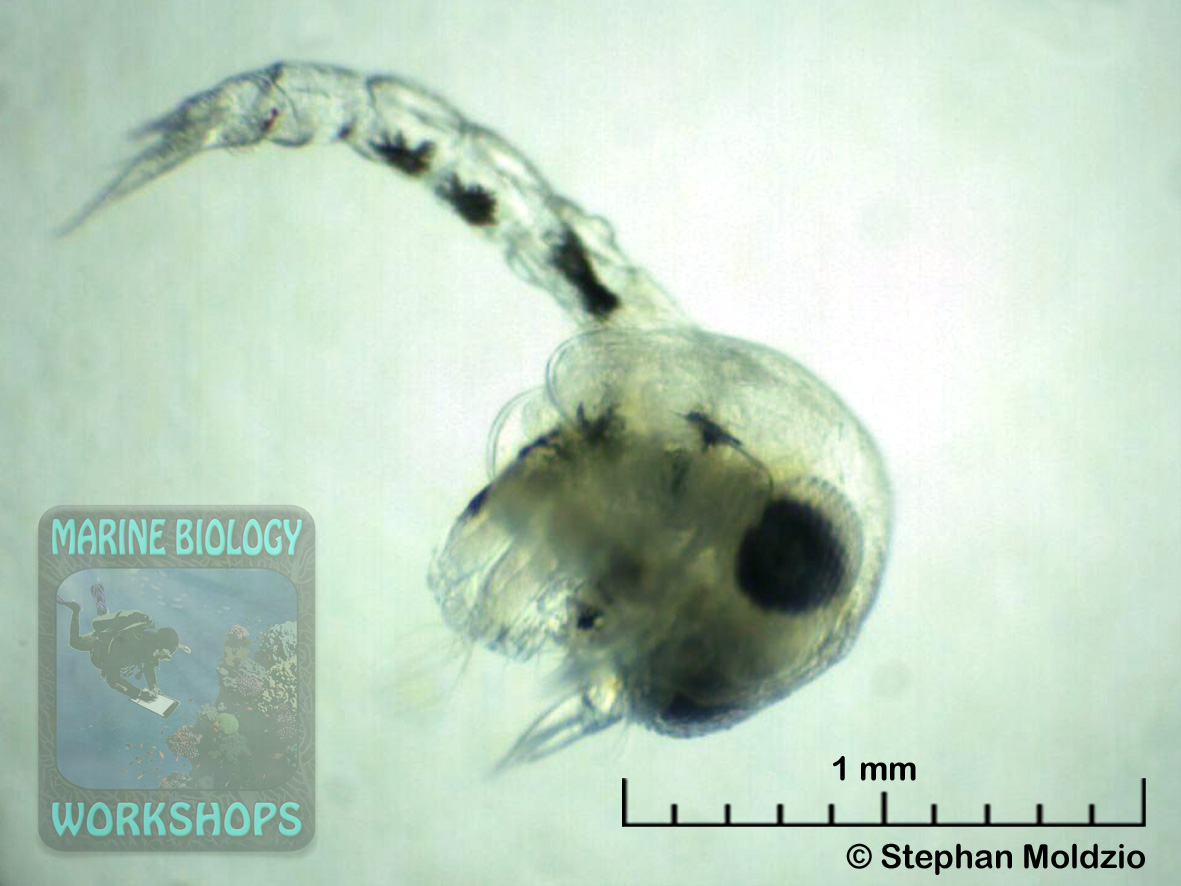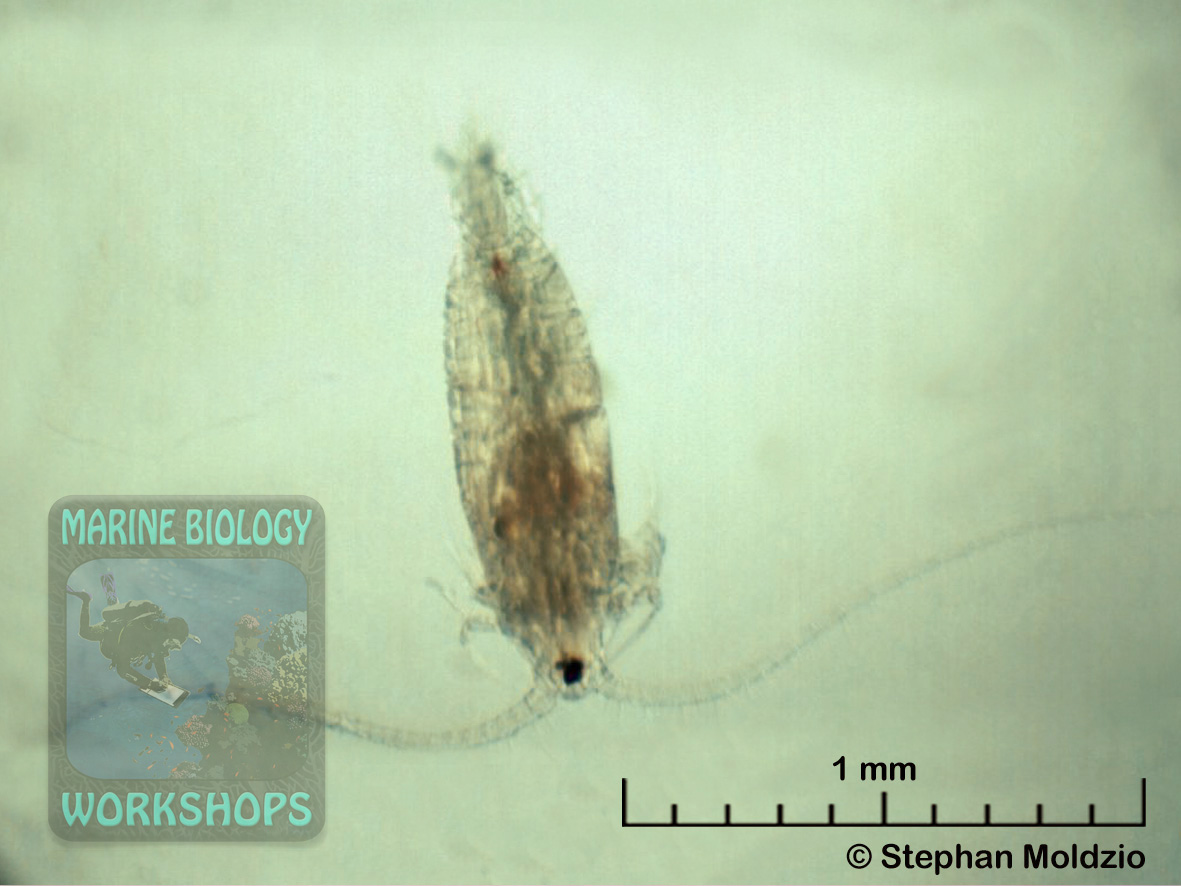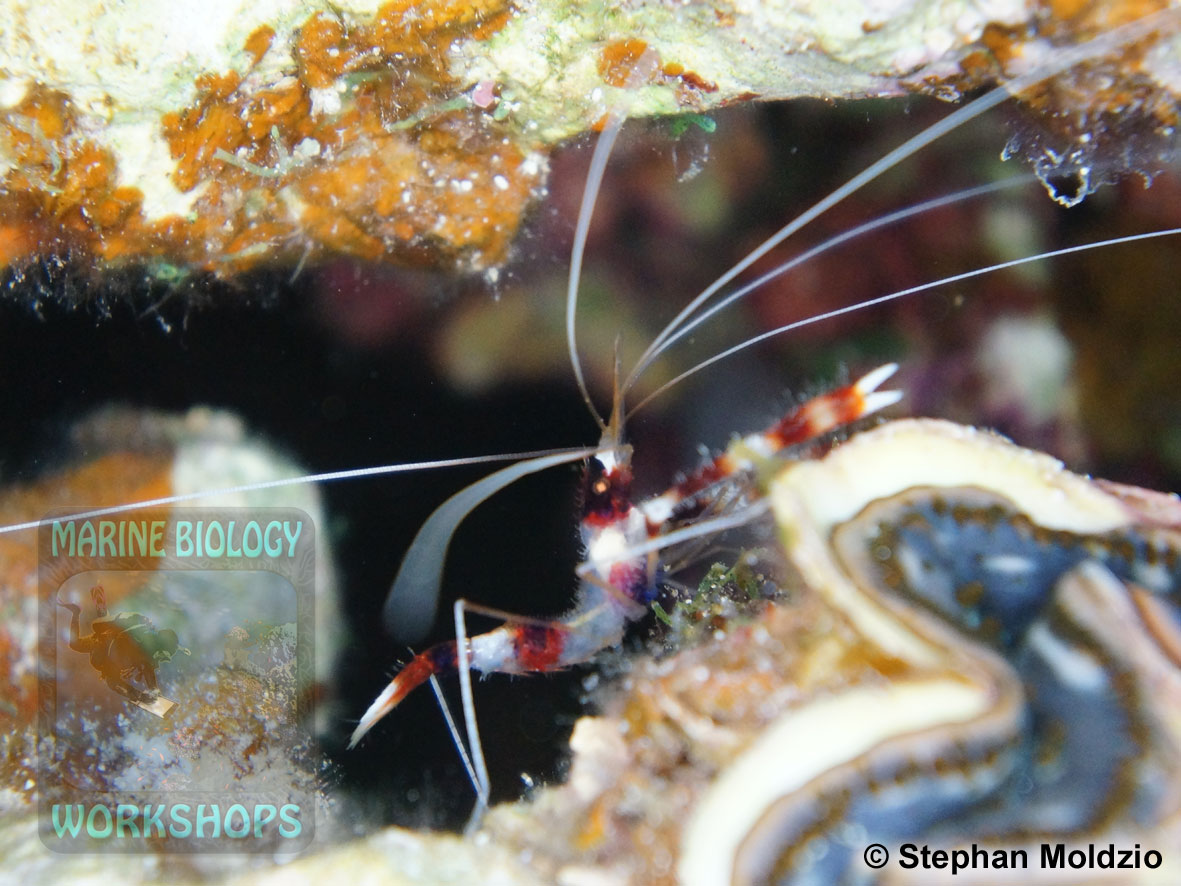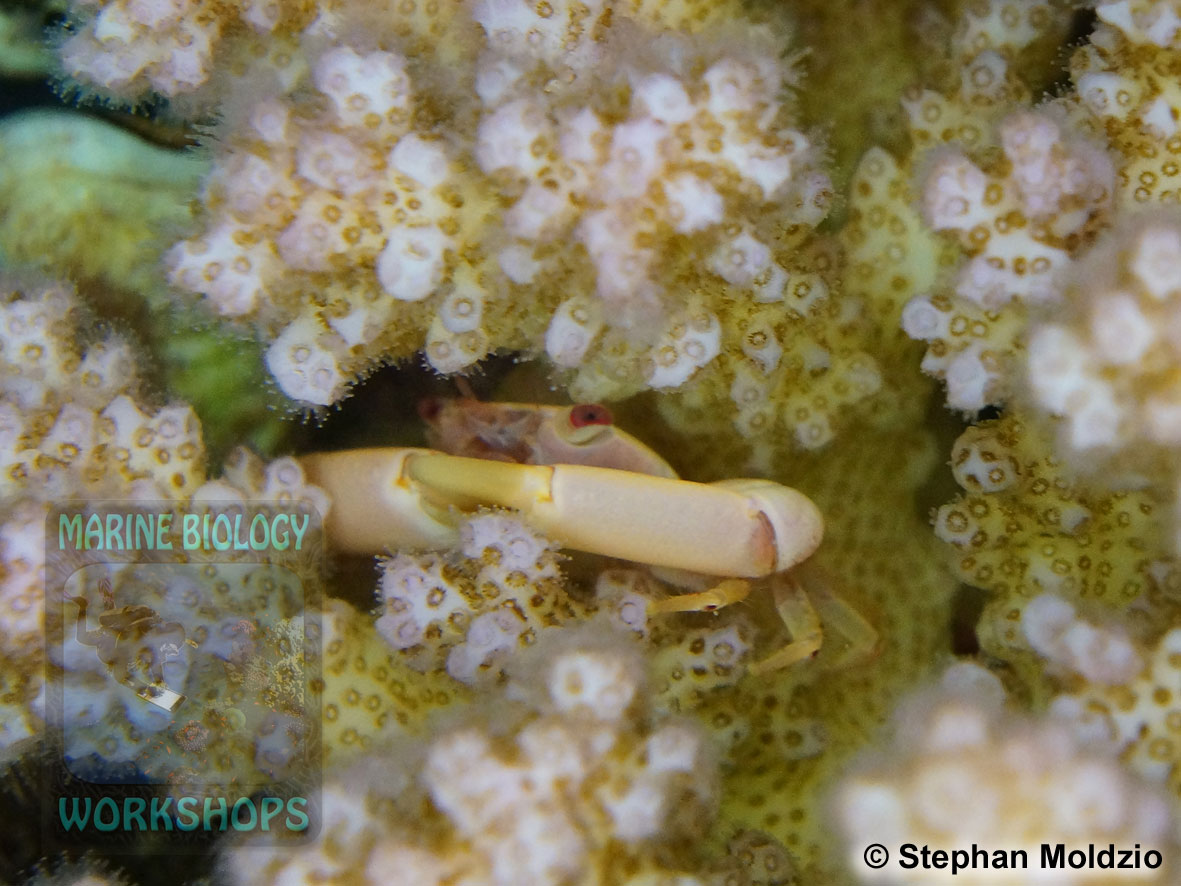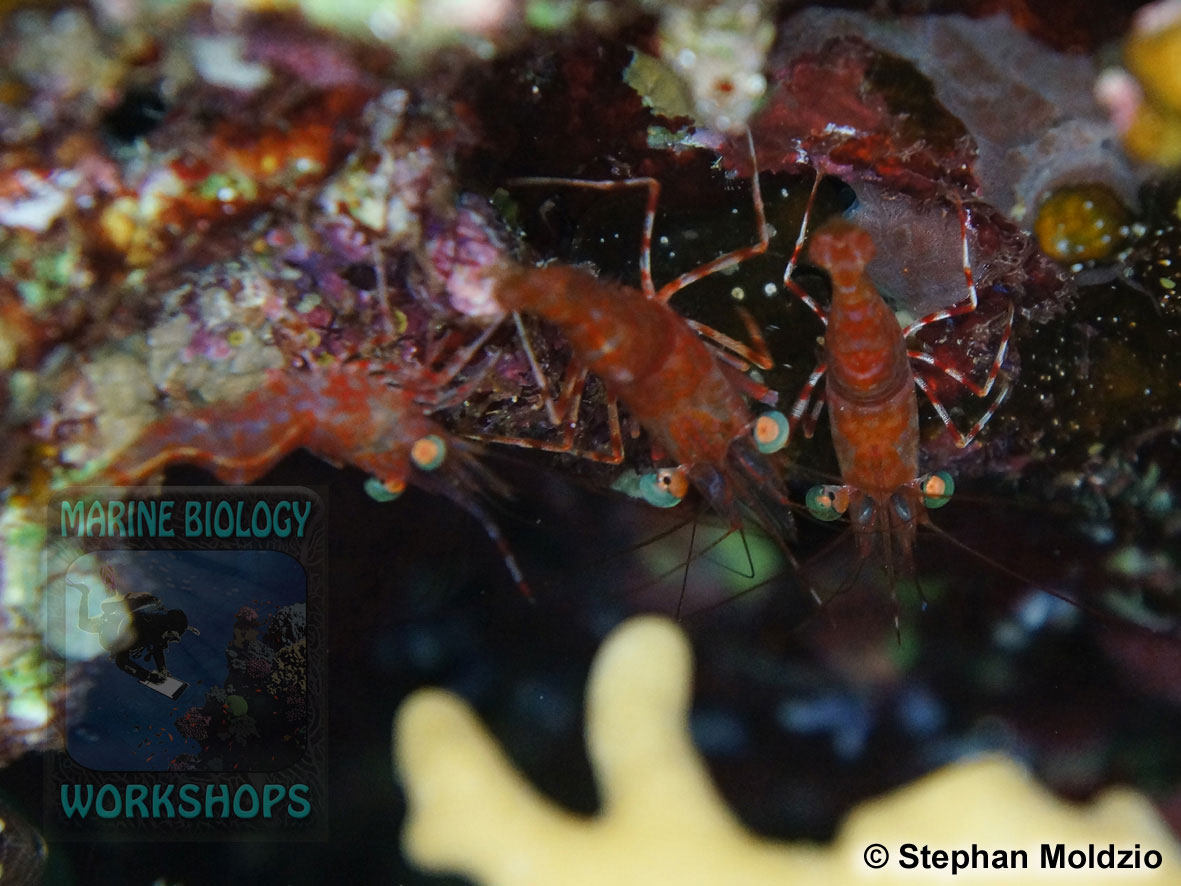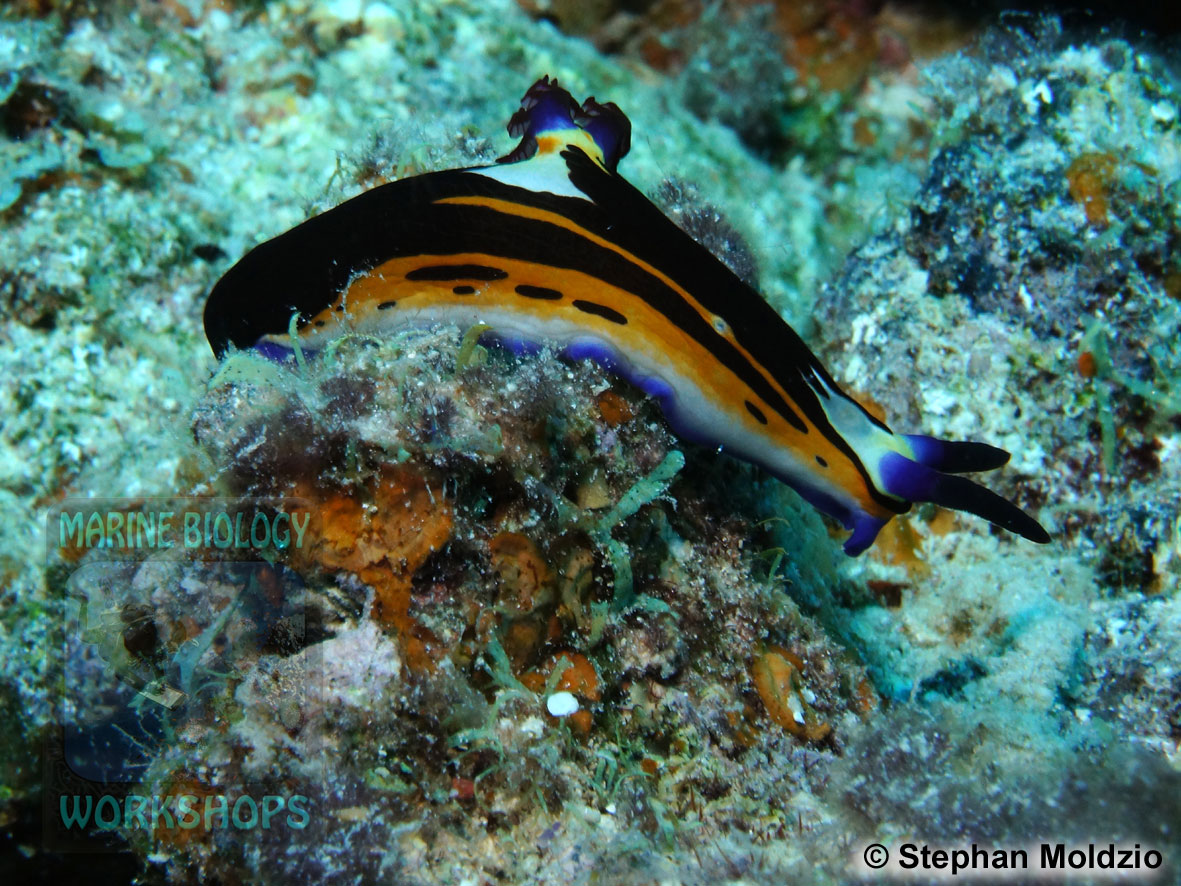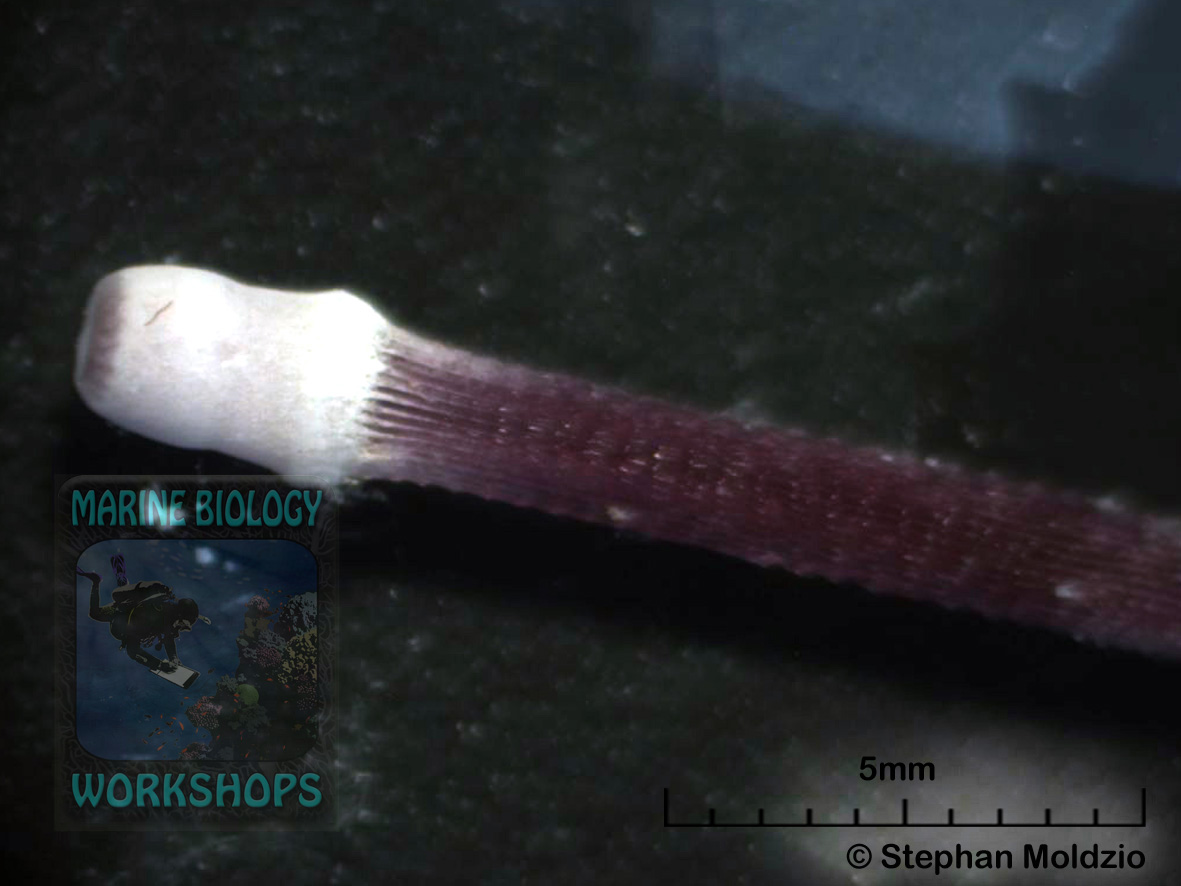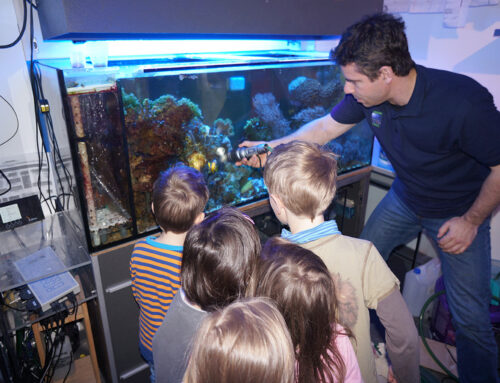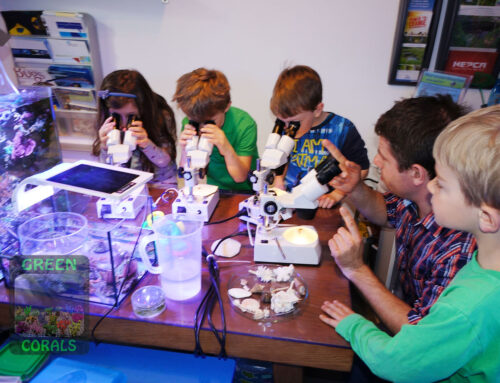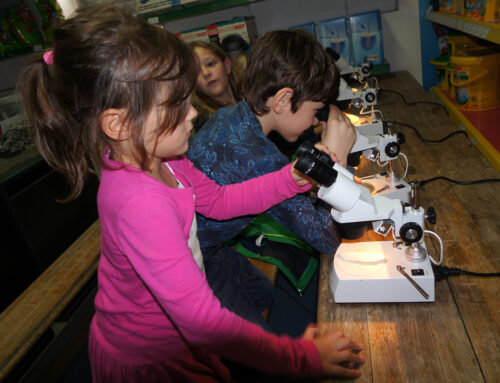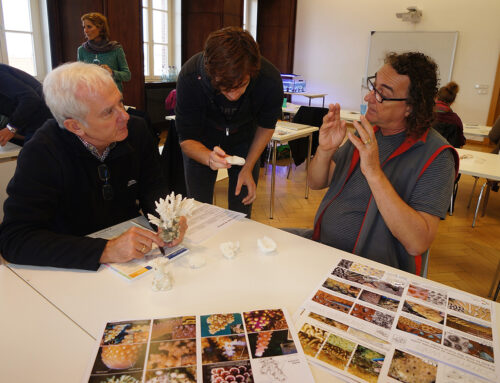The topics of the 3-day workshop were :
• Coral reef ecology
• fishes of the Red Sea
• plankton and microfauna
• threats to marine ecosystems & marine conservation
The evening presentation on “Coral reef ecology” began with the conditions and pre-requisites of coral reef ecosystems, reef building and erosion. We elaborated on the different types of reefs and their zonation and looked at some of the reasons for this enormous species diversity. Furthermore, we explored the manifold relationships within this ecosystem and the food web, and concluded with a look at the reef’s architects, the corals themselves.
In the section “fishes of the Red Sea”, we focussed on just a few of the 58 and more fish families around Marsa Shagra. e.g. parrotfishes, wrasses, snappers, emperors, sweetlips and fusiliers, blennies and gobies and we worked with the reef illustration chart again. In the course of this, we learned about their ecology and how to distinguish them and had a short introduction to working with international zoological databases such as FishBase.
We started with stunning early morning dives and ended with breathtaking night dives in the waters of the Marsa Shagra house reef, north reef and south reef, as well as the sandy bottom inside the bay from the very shallow water right to the lower reef slope. We looked at symbiotic partnerships and parasites, observed coral predators, coral disease and coral damage and found nutrient indicator algae as well as very rare species such as the just recently described clam Tridacna costata.
(note march 2018: Meanwhile this species has been renamed to T. squamosina).
On our last night dive, we encountered the resident giant moray, hunting and feeding on sleeping parrotfish and also rather fortuitously, a baby blacktip reef shark swimming very close to the shore at around 50 cm depth.
We returned to Elphinstone and observed some predators on higher levels of the food web. There were no hammerhead sharks this time, but dogtooth tuna as well as barracudas were seen.
For the microscope session, we took samples of rubble, algae, sand and plankton and investigated them under the stereo microscope with 10- to 40-fold magnification. The plankton sample was again full with tiny free-swimming bristle worms, copepods, ostracods, fish lavae and larval stages of invertebrates and many more. In between tiny grains of sand in our sand sample we found microscopic but quickly moving ciliates and nematod worms, skeletal needles deriving from soft corals, sponges and fragments of the lime skeletons of corals, snails and sea urchin spines. Pieces of rubble were overgrown with various sessile invertebrates and algae.
The presentation “Threats to marine ecosystems and marine conservation” on the last day dealt with the general function of the biosphere, the global material cycles, the marine habitats and their physical and chemical properties and the status of coral reefs today. We looked at the current threats to marine ecosystems such as overfishing and other forms of exploitation, pollution, overfertilization and sediment run-off and also cast our eye on upcoming threats such as global warming, ocean acidification and sea level rise – caused by the man-made disturbance of the carbon cycle.
The concluding thought of the workshop, especially in view of the complex and unpredictable, self-strenghtening feedback effects, is that immediate climate measures and environmental action is needed to preserve what is left.
We continued with interesting discussions in the bedouine café.
